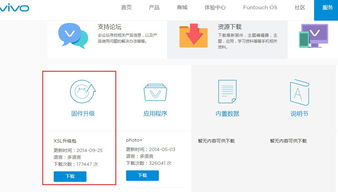
怎么升级安卓系统英文,Step-by-Step Guide to Updating Your Android System
时间:2025-05-06 来源:网络 人气:
Hey there, tech-savvy friend! Ever felt that your Android phone is just a bit too slow or laggy? Well, guess what? It's time to breathe new life into your device with a system upgrade! But hold up, how do you do that? Don't worry, I've got you covered with a step-by-step guide on how to upgrade your Android system. Let's dive right in!
Why Should You Upgrade Your Android System?

Before we jump into the nitty-gritty of the upgrade process, let's talk about why you should consider it. Here are a few reasons:
Improved Performance: Newer versions of Android are optimized for better performance, which means your phone will run smoother and faster.
New Features: Upgrading to the latest version of Android will give you access to new features and functionalities that weren't available in previous versions.
Security: Regular updates keep your phone secure from potential threats and vulnerabilities.
Checking Your Current Android Version

Before you start the upgrade process, it's important to know which version of Android you're currently running. Here's how to check:
1. Go to your phone's Settings.
2. Scroll down and tap on \System\ or \About phone.\
3. Look for \Android version\ or \Software information.\ This will display the current version of your Android system.
How to Upgrade Your Android System: The Step-by-Step Guide
Now that you know your current Android version, let's move on to the upgrade process. Here's how to do it:
1. Check for System Updates

1. Go to your phone's Settings.
2. Scroll down and tap on \System\ or \About phone.\
3. Look for \System updates\ or \Software update.\ Tap on it.
4. If an update is available, tap on \Download and install\ or \Check for update.\ Your phone will then download and install the latest version of Android.
2. Use a PC or Laptop
If your phone doesn't have an option to update the system directly, you can use a PC or laptop to do it:
1. Connect your phone to your computer using a USB cable.
2. Open the Android Debug Bridge (ADB) tool on your computer. You can download it from the official Android website.
3. In the ADB command prompt, type \adb sideload
4. Your phone will then install the update.
3. Use a Third-Party App
If you're not comfortable using ADB or your phone doesn't have an option to update the system directly, you can use a third-party app to do it:
1. Download and install a third-party app like \System Update\ or \OTA Update\ from the Google Play Store.
2. Open the app and follow the instructions to download and install the latest version of Android.
4. Use a Custom ROM
If you're looking for a more advanced upgrade, you can install a custom ROM like LineageOS or Pixel Experience. Here's how:
1. Download the custom ROM file from the official website.
2. Boot your phone into recovery mode (usually by holding the Power and Volume Down buttons simultaneously).
3. Wipe your phone's data and cache.
4. Flash the custom ROM file using a recovery tool like TWRP.
5. Reboot your phone and enjoy the new system!
5. Consider the Risks
Before you proceed with the upgrade, it's important to consider the risks involved:
Data Loss: Make sure to back up your phone's data before upgrading.
Device Compatibility: Not all phones are compatible with certain versions of Android. Check the compatibility list before proceeding.
Bricking Your Phone: There's always a risk of bricking your phone if something goes wrong during the upgrade process. Proceed with caution!
What to Expect After the Upgrade
Once you've successfully upgraded your Android system, you'll notice several improvements:
Faster Performance: Your phone will run smoother and faster.
New Features: You'll have access to new features and functionalities.
Improved Security: Your phone will be more secure from potential threats and vulnerabilities.
Conclusion
Upgrading your Android system is a great way to breathe new life into your device. By following the steps outlined in this guide, you can easily upgrade your system and enjoy a faster, more secure, and feature-rich experience. So, what are you waiting for? Go ahead and upgrade your Android system today!
相关推荐
教程资讯
系统教程排行












